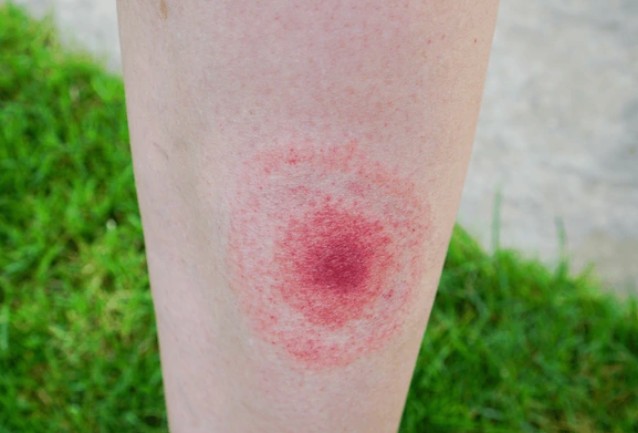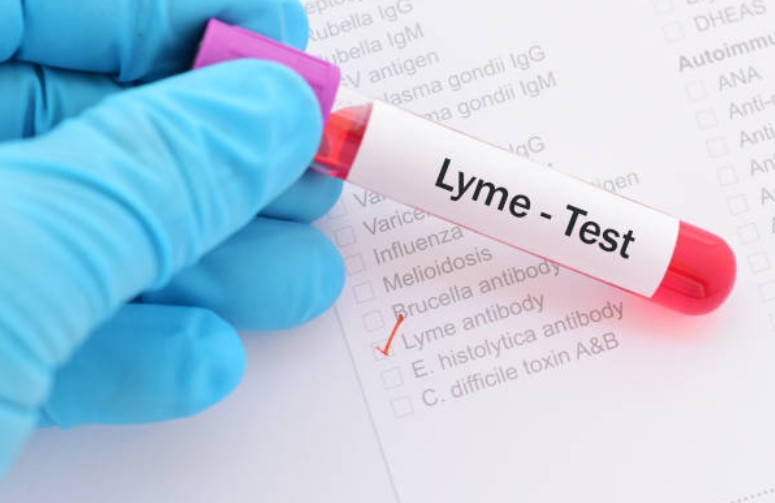Serious health issues can start small, like a tick bite. Lyme disease often begins with mild symptoms but can lead to bigger problems if not treated early. Spotting the signs quickly is key to staying healthy.
What is Lyme Disease?
Lyme disease is caused by the bacterium Borrelia burgdorferi, which is commonly passed to humans through the bite of black-legged ticks, often called deer ticks. These ticks are incredibly small—sometimes no bigger than a poppy seed—so they can easily go unnoticed.
Lyme disease is a bacterial infection transmitted through black-legged tick bites, causing fever, rash, joint pain, fatigue, and possible nerve issues. If left untreated, it can lead to more serious complications affecting the joints, heart, and nervous system.
How Lyme Disease Spreads?
Ticks pick up the bacteria by feeding on infected animals like mice and deer. For the bacteria to be transmitted, the tick usually needs to stay attached to the skin for at least 24 to 36 hours. This is why regularly checking your skin and quickly removing any ticks can make a big difference in reducing your chances of getting infected.
Early Symptoms of Lyme Disease
The first signs of Lyme disease usually develop within 3 to 30 days after a tick bite. A well-known early symptom is the bull’s-eye rash, a circular red rash that expands over time. However, not everyone develops this rash.
Recognizing the Bull’s-Eye Rash
The bull’s-eye rash, or erythema migrans, is a key indicator of Lyme disease but may not appear in all cases. It typically starts small and grows, often with a clear center, making it distinctive.

Other Early Symptoms to Watch For
Many people also experience fever, chills, headaches, muscle aches, joint discomfort, fatigue, and sometimes swollen lymph nodes. These flu-like symptoms can be easily mistaken for a common illness, which can delay diagnosis.
The Stages of Lyme Disease
Lyme disease usually progresses through three main stages, each with different symptoms and challenges.
Stage 1: Early Localized Infection
At first, the infection is mostly limited to the area around the tick bite. You might notice the classic bull’s-eye rash along with flu-like symptoms such as fever and fatigue. This stage is the easiest to treat, and antibiotics can often clear the infection quickly.
Stage 2: Early Disseminated Infection
If the infection spreads, you may start experiencing more serious symptoms. This can include severe headaches, a stiff neck, or weakness in your facial muscles known as Bell’s palsy. Some people also feel dizzy or notice irregular heartbeats. Rashes might appear on other parts of the body, too.
Stage 3: Late Disseminated Infection
When Lyme disease goes untreated for months or years, it can lead to long-term issues. Chronic joint pain—especially in the knees—is common, along with persistent tiredness, difficulty focusing, mood swings, and nerve problems like numbness or tingling in the hands and feet.
How Lyme Disease Can Affect You Long After Treatment?
For some, Lyme disease symptoms don’t completely go away even after treatment—this is called Post-Treatment Lyme Disease Syndrome (PTLDS). People with PTLDS often deal with ongoing joint pain, tiredness, memory problems, and trouble sleeping.
While doctors aren’t exactly sure why these symptoms linger, many find that with time, rest, and proper care, their condition gradually improves. Supportive treatments can help manage these challenges and make daily life easier.
How Lyme Disease Is Diagnosed and Treated?
Diagnosing Lyme disease isn’t always straightforward. Doctors look for telltale signs like the distinctive rash and will ask if you’ve been outdoors in tick-prone areas. Blood tests can help confirm the infection, but if done too early, they might not catch it right away.

When caught early, Lyme disease usually responds well to a course of oral antibiotics lasting two to four weeks. In more serious cases, intravenous antibiotics might be needed. Alongside treatment, managing symptoms like pain and fatigue can make recovery smoother.
How to Protect Yourself from Lyme Disease?
Staying safe from Lyme disease is all about being mindful when you’re outdoors. If you’re heading into wooded or grassy areas, wearing long sleeves, tucking your pants into your socks, and using tick repellent can make a big difference.
After spending time outside, take a moment to carefully check yourself, your clothes, and even your pets for ticks. Removing any ticks quickly is key to lowering your risk. Taking a shower soon after being outside can also help wash away ticks before they latch on.
Simple Ways to Recovery
Antibiotics are the best way to fight Lyme disease, but don’t forget to rest, stay hydrated, and eat well to help your body heal. Being gentle with yourself makes a big difference.
If you’re achy, mild pain relief can help, and simple practices like stretching or deep breathing may ease stress. Always check with your doctor before trying anything new.
When to Consult a Doctor About Lyme Disease?
If you’ve been in areas where ticks are common and notice symptoms like a rash, fever, joint aches, or flu-like signs—even without remembering a tick bite—it’s important to see a doctor.

Because tick bites can be hard to spot, paying attention to how you feel after outdoor activities is key. Early diagnosis and treatment can stop Lyme disease from getting worse and causing more serious health issues. Don’t hesitate to get medical advice if you’re unsure—it’s better to act early than risk complications later.
Overview
Lyme disease is a tick-borne illness that starts with mild flu-like symptoms but can cause serious health problems if untreated. Early detection and treatment are key.
Preventing Lyme disease involves wearing protective clothing, using repellents, and checking for ticks after outdoor activities. Staying aware and seeking prompt care helps protect you and your family.






